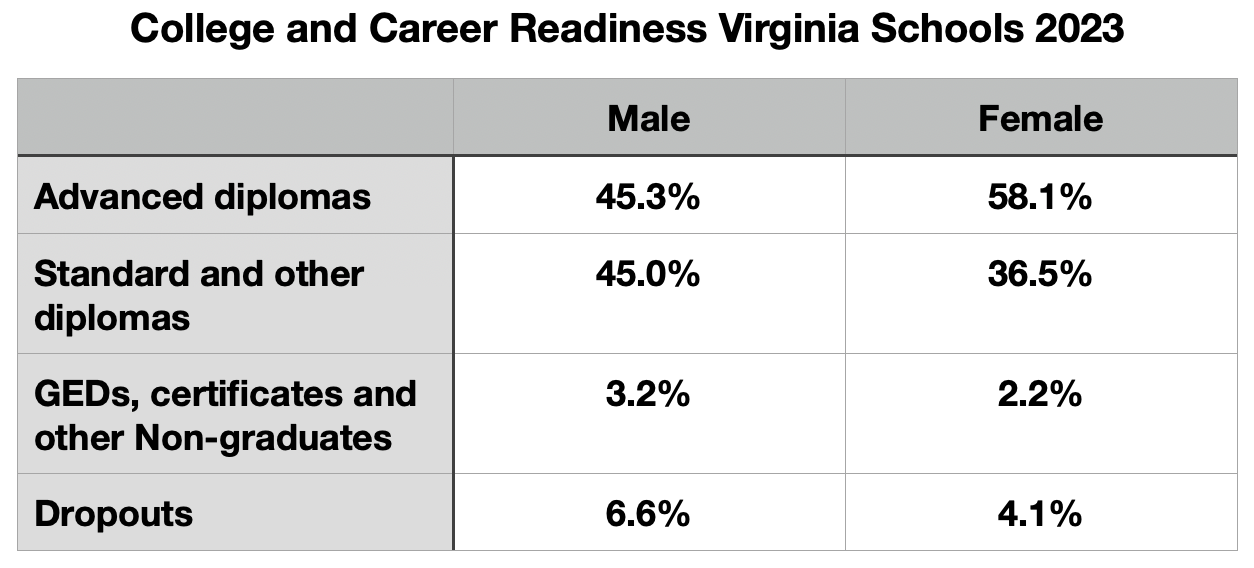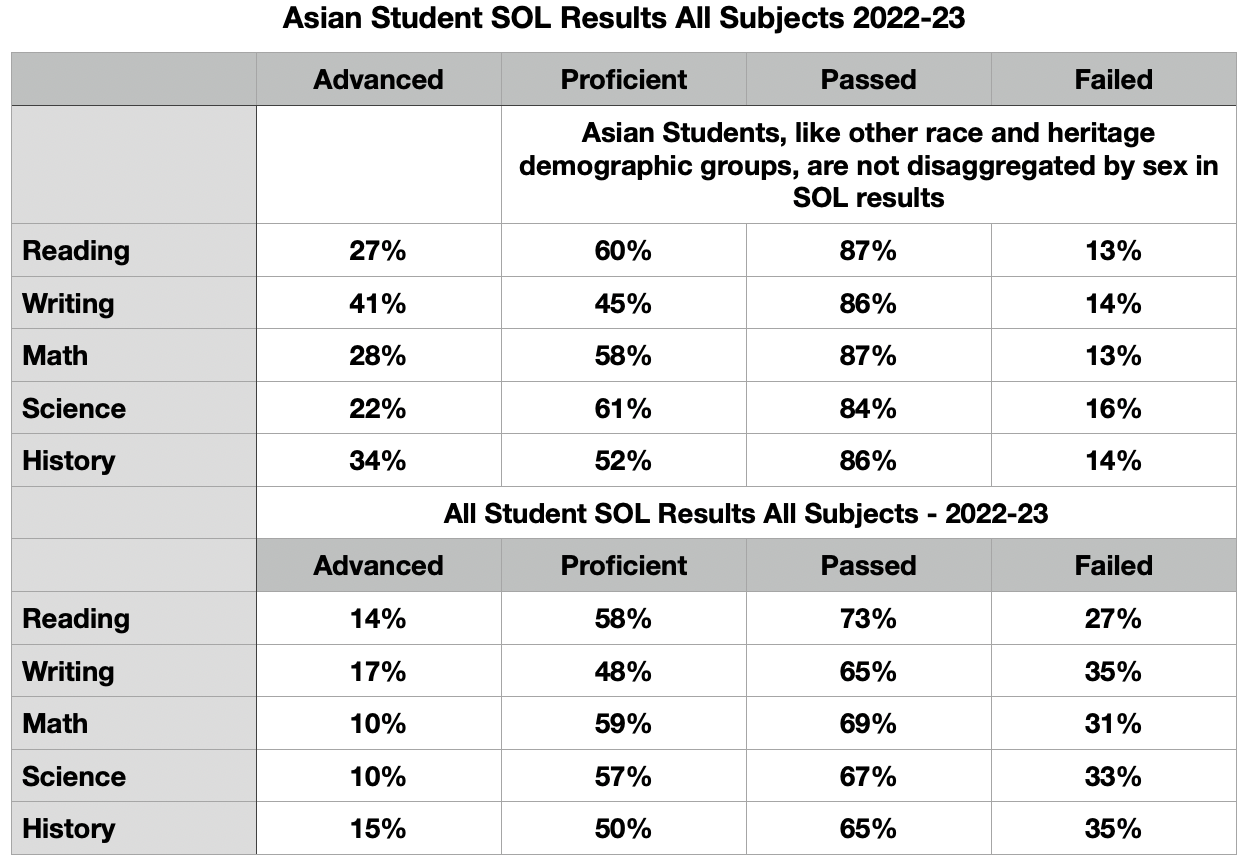by James C. Sherlock
Girls significantly outperform boys in English Language Arts (ELA) (reading and writing) in public schools and perform about as well in math and science, both across the nation and in Virginia.
Virginia statewide SOL performance statistics give the details here.

Across the state, girl students are better readers and far better writers than boys. Those English language arts performances at the state level of course mask both smaller and greater gaps in individual divisions and schools.
The writing gaps exist in both high-performing Loudoun County and in poor-performing Richmond City schools.
Broken down to the next level of detail in writing performance statewide, it looks worse.
There is a single-sex classroom option that has been operating for a long time at a middle school in Prince William County. For the best ELA results, it is reasonable to think that model may have to be extended to elementary school.
College and Career Readiness statistics offer confirmation of the outcome of boys’ ELA deficiencies.
The Virginia Literacy Act starting in the 2024-25 school year will make major upgrades to literacy instruction.
Absenteeism. It would be easy to consider educational gaps in boys to be an artifact of higher absenteeism than girls. But that’s not it.
One of the artifacts of my research into chronic absenteeism in Virginia public schools statewide in 2023 was that male and female results by percentage were exactly the same: 19.5%.
That, on the surface at least, may confirm parental influence on absenteeism.
The science of learning in boys. The medical community has offered scientific observations of brain science and social development that matter here.
Those observations typically include, aggregated by Microsoft Bing AI search from three different sources:
- Boys’ brains secrete less serotonin, which is directly related to impulse control;
- Boys start out primarily as tactile and kinesthetic learners;
- Boys show more areas in the brain dedicated to spatial-mechanical strengths;
- Girls generally demonstrate a focus on verbal-emotive processing;
- Girls have more of their cerebral cortex defined for verbal function;
- The hippocampus, where memory and language live, does develop more rapidly and is larger in girls than in boys. This impacts vocabulary, reading, and writing skills.
We will consider those to be illustrative. They certainly seem to argue for different approaches to educating boys and girls.
Asian students. The special case of Asian students in ELA and all other subjects must be taken into account when seeking solutions to the boy/girl gaps. They absolutely blow away all other demographics of students, despite the fact that English may not be the first language spoken at home.
That clearly represents a difference in learning style and effort, not in teaching style.
The public data on Asian students are not in Virginia deconstructed by male and female results, but I have asked VDOE to provide and I will report it.
Educational evidence. In 2005, the Policy and Program Studies Service of the U.S. Department of Education published Single-Sex Versus Coeducational Schooling: A Systematic Review.
The reviewers used What Works Clearinghouse (WWC) standards to sort through 2,221 studies.
The Executive Summary is here. I urge you to read it.
You will see that the bulk of the evidence at the time of that review favored learning in single-sex schools. But you will also see that the support for the conclusions is generally thin because of a dearth of scientific studies of important issues.
A current search of WWC on that topic yields no study that meets their standards.
The ed schools have moved on.
Single-sex classrooms have been offered successfully at Woodbridge Middle School in Prince William County for more than a dozen years. We will examine that in more detail in the next article.
But that single school effort is not robust enough to meet WWC standards. It will take a much broader, scientifically designed and run trial.
Bottom line. The educational gaps between boys and girls are too big for state government and citizens to continue to ignore in Virginia.
Indiana has not ignored them. See both sides of The Great Gender Debate: Should Boys And Girls Learn Separately? published by Indiana’s State Impact Project.
It is time to focus on the education of boys who, unsurprisingly, act and learn like boys.
Woodbridge Middle has proven it is possible to offer single-sex classrooms in co-ed public schools, subject to parental choice of classroom assignments.
And it has apparently solved, if such a thing is achievable, the ACLU’s objections to single-sex schools detailed in The Great Gender Debate.
Next time I will offer a concept for the voluntary implementation by school divisions of single-gender and co-ed classrooms in co-ed public schools across Virginia.
It will serve as the basis for a definitive study to provide the evidence needed to solve the debate.
Updated Dec. 19 at 15:20 to add the discussion about Woodbridge Middle and to eliminate the discussion about ed schools.




Leave a Reply
You must be logged in to post a comment.